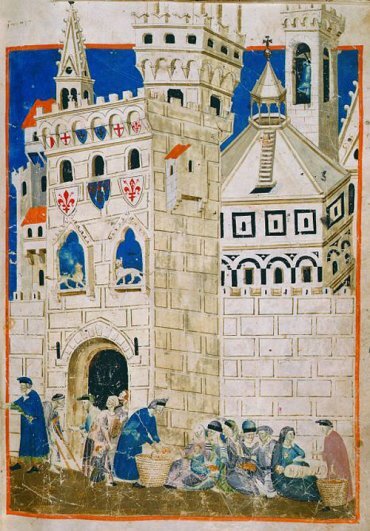From the Fleur de Lys to the David: civic art in Florence at the Galleria dell'Accademia

Until 8th December, the Galleria dell'Accademia in Florence will host the exhibition "From the Fleur de Lys to the David. Civic Art in Florence between the Middle Ages and the Renaissance", that collects artworks that document the civic life of communal and republican Florence, from the XIII century to the Renaissance.
Among these statements there are decorations of public buildings, drawings, seals and documents with a mixture of sacred, mythological and heraldic images. The exhibition examines artistic themes belonging to different aspects of the history, faith and creativity of Florentine society in those you can certainly describe as its "golden age".
These elements include the heraldry of the city, religion, places of power such as the Palazzo dei Priori (now Palazzo Vecchio) and the Palazzo dei Podestà (now the Bargello Museum), and the political parties in power, therefore Anjou, Guelphs and Ghibellines. This highlights the importance which, like in the present days, was given at that time to the images as a mean of propaganda and communication, especially by those who held power before the rise of the Medici, an event that completely transformed the city of Florence, both from a political and an aesthetic point of view.
Numerous and different allegorical references can be found in the works displayed in the exhibition. Sacred and profane come together and complement each other in a very complex figurative language. For example, in the Palazzo Vecchio - once the Palazzo dei Priori - we can find different and almost opposite representations: from St. Christopher and the Wheel of Fortune, to the mythological Hercules and the Jewish David. The latter close the exhibition with a subject carved by Michelangelo, who later became the emblem of republican Florence.
Of course the time has unfortunately damaged many pictures and drawings, but among those preserved there are mainly religious images: different representations of the Madonna in Majesty, patron saints and New Testament emblematic stories. There are also some rare drawings that depict infamous images with gruesome details of facts and figures enemies of Florence, in public places. While in the market you could find auspicious images, such as the statue of Dovizia by Donatello, a symbol of abundance. Finally the city and its allies were celebrated on the city gates and city walls with decorations and heraldic images.
A prominent place in the exhibition is particularly attributed to the Arts, as the true economic engine of the city, so that to participate in the political life it was necessary to be enrolled in one of the corporations.











